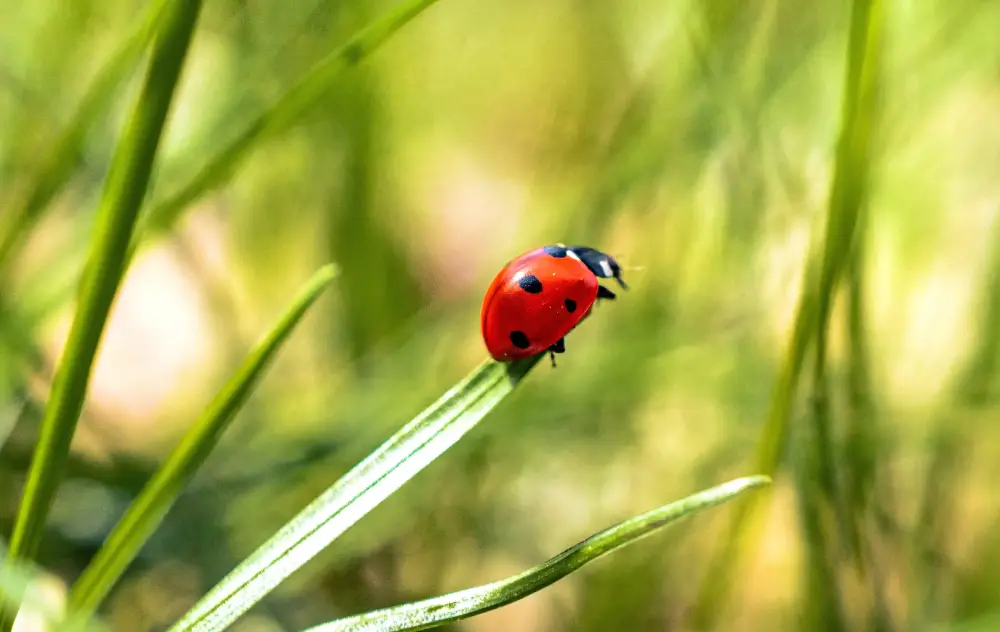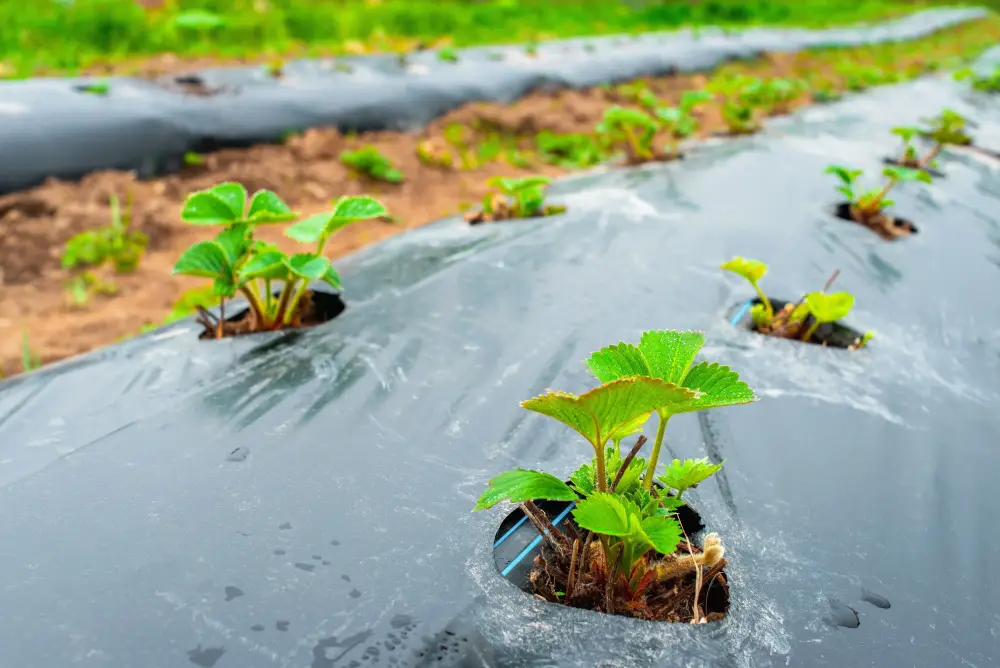
Lawn Innovation & Sustainability: Part 1
Integrated pest management (IPM) is an environmentally sensitive approach to pest treatment that combines multiple methods for more effective population control. Instead of relying primarily on chemical treatments, IPM incorporates biological, cultural, physical, and chemical tools. This coordinated strategy minimizes risks to people, beneficial organisms, and the environment.
Traditional pest control typically follows a calendar schedule, with regular treatments regardless of whether pests are actually present. Integrated pest management (also known as integrated pest control) uses a fundamentally different strategy based on monitoring and targeted responses.
The integrated pest control approach prioritizes prevention and monitoring over routine pesticide applications. Instead of providing blanket treatments, IPM professionals identify actual pest problems, population thresholds, and the most appropriate response for each situation. Chemical treatments are used only when monitoring indicates they're necessary and after less impactful options have been considered.
This integrated strategy typically results in effective control of harmful pest populations while minimizing environmental impact.
How Integrated Pest Control Works
Integrated pest management operates on a simple principle: treat problems when they actually exist, not when the calendar says to. This approach relies on four interconnected strategies that build on each other.
Knowing when to act
Not every pest requires immediate action: A single aphid doesn't usually justify treatment, but a colony that's weakening your roses does. Action thresholds define these tipping points by identifying the specific pest levels or damage patterns that signal when intervention becomes necessary.
These trigger points can vary dramatically depending on the situation. For instance, commercial vegetable growers might tolerate higher pest levels than homeowners with prized ornamental gardens. The key is establishing clear criteria before problems arise.
Recognizing friends and foes
Effective pest management starts with the pests themselves! Regular property inspections reveal not only whether pests are present, but population trends and seasonal patterns, too.
More importantly, inspections prevent costly mistakes. Many beneficial insects closely resemble harmful pests (lady beetle larvae, for instance, look remarkably similar to pest caterpillars, but actually devour aphids and other problem insects). Proper identification protects these natural allies while targeting genuine threats.
Stopping problems before they start

The most effective pest control happens before pests arrive. Strategic planting alone can eliminate entire categories of problems. For instance:
- Disease-resistant plant varieties remove the need for fungicide treatments.
- Proper plant spacing improves air circulation, reducing the humidity that encourages pest development.
- Physical barriers, such as row covers or copper strips around planters, provide chemical-free pest deterrents.
These upfront investments often eliminate the need for ongoing pest treatment.
Targeted control applications
When prevention fails and action thresholds are exceeded, precise solutions are preferable to broad-spectrum treatments.
For example, your integrated pest control professional might suggest:
- Pheromone traps that disrupt pest mating cycles without affecting other species.
- Beneficial nematodes that target specific soil-dwelling pests while leaving earthworms unharmed.
Even when pesticides become necessary, selective products that affect only the target pest minimize collateral damage to beneficial organisms.
Working with Nature to Control Pests
Chemical pesticides are just one part of the integrated pest management toolkit, and they’re typically not the first choice. Eco-friendly methods form the backbone of integrated pest control, offering solutions that work with natural systems rather than disrupting them.
Nature's pest control team
Did you know nature has its own pest control workforce? Beneficial insects, spiders, birds, and other predators help keep pest populations balanced. For example, lady beetles typically eat up to 50 aphids per day, while bats patrol for flying insects at night. Parasitic wasps (nasty as they may sound) eliminate future pest generations by laying eggs inside larvae.
Instead of working against these helpful creatures, integrated pest management supports them through smart landscaping choices. Native flowering plants feed beneficial insects with nectar, while small water features attract pest-eating birds and amphibians. Even a bit of wild growth in your landscape can provide the winter shelter that beneficial species rely on to reproduce in the spring.
Smart plant choices and simple barriers
Plant selection plays a major role in pest prevention:
- Native species naturally resist local pests more effectively than exotic plants that lack built-in defenses.
- Cool-season crops planted early or late can avoid peak pest activity.
- Proper spacing improves airflow, which reduces the humid conditions pests love.
In addition, physical barriers often provide simple but surprisingly effective pest solutions:
- Row covers protect young plants while letting in light and water.
- Copper strips keep slugs and snails out of garden beds.
- Sticky traps catch flying pests without harming beneficial ground insects.
Even basic seasonal maintenance can help. For instance, a simple fall cleanup can remove places where problem insects spend the winter — meaning there will be fewer in the spring.
Building natural balance
A diverse property with a range of plant varieties will support beneficial species year-round. Combining these natural approaches creates a self-regulating ecosystem where pest problems rarely reach damaging levels, all without constant intervention.
Why Choose Integrated Pest Management?
Integrated pest management offers real advantages beyond just controlling pests. An IPM approach can create value that compounds over time for your property, your family, and your wallet.
- Environmental protection: Integrated pest control preserves beneficial species, such as bees, butterflies, and pest-eating birds, while reducing chemical runoff that can contaminate soil and water sources.
- Long-term cost savings: While it requires more upfront planning, integrated pest control typically results in lower costs over time, thanks to naturally pest-resistant landscapes and a reduced need for repeat treatments.
- Family and pet safety: Reduced pesticide use means fewer chemicals around children and pets, creating outdoor spaces where families can relax without worrying about recent chemical applications.
- Healthier landscapes: Integrated pest control promotes a healthy local ecosystem. Diverse vegetation helps support beneficial organisms while naturally improving soil quality.
These benefits work together to create more resilient outdoor spaces. Integrated pest control requires less intervention while providing better results than traditional pest control approaches.
When to consider professional integrated pest control services
Successful integrated pest management requires expertise in pest identification, threshold monitoring, and coordinated treatment strategies. Professional pest and weed control services can develop customized programs that address your property's needs while maintaining environmental responsibility.
Managing specific landscape challenges
Every residential or commercial landscape faces unique issues that require tailored approaches. Professional weed control programs can integrate cultural, biological, and targeted chemical methods for sustainable results. The Grounds Guys® offers specialized horticulture services to help establish plant communities that naturally resist pest problems while supporting beneficial species. Learn more about our comprehensive landscaping services and request an appointment today!
FAQs About Integrated Pest Management
As an industry leader, The Grounds Guys are committed to using our 20+ years of landscape knowledge and experience to help bring your vision for your property to life. This includes answering your questions about landscape and lawn care services. Below are answers to some of the most frequently asked questions about integrated pest management.
How does integrated pest management differ from traditional pest control?
Traditional pest control typically follows a calendar-based schedule, applying treatments at regular intervals whether pests are present or not. Integrated pest management takes a completely different approach based on monitoring and evidence. Integrated pest control only treats when pest populations reach established thresholds that indicate potential damage.
Rather than relying primarily on pesticides, this strategy uses a combination of biological, cultural, physical, and chemical control methods. The result is more effective long-term pest control, with reduced environmental impact and lower costs over time.
What are examples of non-chemical pest control methods?
Non-chemical pest control methods fall into several categories:
- Biological controls: Encouraging beneficial insects like lady beetles and parasitic wasps, attracting pest-eating birds and bats, and using beneficial nematodes for soil pests.
- Cultural practices: Selecting pest-resistant plant varieties, ensuring proper plant spacing for good air circulation, planting strategically to avoid pest cycles, and rotating crops in vegetable gardens.
- Physical methods: Row covers and barriers, copper strips for slug control, sticky traps for flying insects, mulching to suppress weeds, and mechanical removal like hand-picking pests or water sprays.
These methods are most effective as part of an integrated approach rather than individually.
Is integrated pest control effective for serious pest problems?
Yes, integrated pest control can be highly effective even for severe pest issues. While IPM may take longer to show initial results compared to chemical treatments, it often provides more lasting solutions by addressing the underlying causes of pest problems. The strength of IPM lies in using multiple strategies simultaneously: If one method is less effective, others continue working.
For serious infestations, integrated pest control can include targeted chemical treatments as part of the overall strategy, but these are applied precisely when and where they’re needed, rather than broadly. Professional IPM programs are particularly effective for challenging pest problems because they combine expert monitoring, accurate identification, and coordinated treatment strategies tailored to specific situations.
Discover integrated pest management with The Grounds Guys
Ready to protect your landscape while supporting beneficial wildlife? Contact The Grounds Guys team near you to learn how our integrated pest and weed control services can create a healthier, more sustainable outdoor space for your family to enjoy.
This article is intended for general informational purposes only and may not be applicable to every situation. You are responsible for determining the proper course of action for your home and property. The Grounds Guys are not responsible for any damages that occur as a result of this blog content or your actions. For the most accurate guidance, contact The Grounds Guys location nearest you for a comprehensive, on-site assessment.